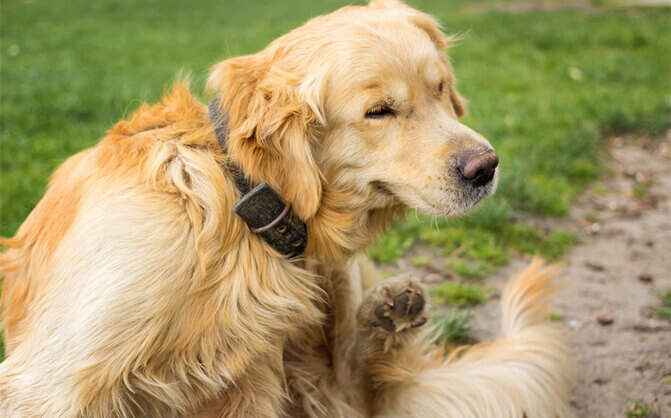As a dog owner, there’s nothing more concerning than seeing your furry friend uncomfortable or unwell. One of the most common issues that can lead to distress in our beloved pets is a flea infestation. These tiny pests can cause significant discomfort and health problems for your dog, making it essential to recognize the signs early and take action swiftly.
In this article, we’ll explore the telltale signs that your dog may have fleas, from excessive scratching to unexpected behavior changes. Don’t worry—alongside these signs, we’ll also provide you with practical and effective strategies to get rid of fleas quickly, helping your pup return to their happy, playful self in no time. Let’s dive in and ensure your four-legged companion stays flea-free!
Table of Contents
- Recognizing the Symptoms of Flea Infestation in Your Dog
- Effective Home Remedies for Quick Flea Control
- Choosing the Right Flea Treatments for Your Dog
- Preventive Measures to Keep Your Dog Flea-Free
- Q&A
- Concluding Remarks
Recognizing the Symptoms of Flea Infestation in Your Dog
Identifying a flea infestation in your dog can be straightforward if you know what to look for. Common symptoms signaling that your furry friend might be dealing with fleas include:
Excessive scratching or biting: Constantly scratching or biting at their skin, especially around the base of the tail and ears.
Red, irritated skin: Look for signs of inflammation or hot spots due to excessive scratching.
Flea dirt: Tiny black specks in your dog’s fur, which are actually flea feces. You can confirm by adding a drop of water; if it turns red, it’s definitely flea dirt.
Hair loss: Patchy areas where fur may be missing due to irritation or flea bites.
Restlessness: Your dog may have difficulty settling down or sleeping comfortably because of the discomfort.
In addition to these behavioral signs, you may spot live fleas or flea eggs. Fleas are small, fast, and usually dark brown, making them hard to catch. Checking your dog’s fur and skin on a light-colored surface can help you spot them more easily. If you notice any of the symptoms above, consider taking immediate action. Here’s a quick table summarizing how to tackle a flea problem:
| Action | Description |
|---|---|
| Flea Treatments | Use vet-recommended treatments like topical solutions, collars, or oral medications. |
| Regular Grooming | Brush your dog frequently to remove fleas and eggs. |
| Home Cleaning | Vacuum carpets, upholstery, and wash bedding to eliminate any fleas or eggs in your environment. |
| Consult a Veterinarian | Seek professional advice for the best treatment options tailored for your dog. |
Effective Home Remedies for Quick Flea Control
Dealing with fleas can be frustrating, but several effective home remedies can provide quick relief for your furry friend. Consider using a mixture of apple cider vinegar and water in a spray bottle; applying this solution directly to your dog’s coat can deter fleas and soothe irritated skin. Another popular remedy is the use of diatomaceous earth—a natural powder that can be sprinkled on carpets and pet bedding. This substance works by dehydrating fleas and their eggs, effectively disrupting their life cycle. Remember to vacuum thoroughly after using it to ensure that you capture the dead fleas and their remains.
Additionally, incorporating essential oils like lavender, peppermint, or cedarwood into your cleaning routine can be beneficial. These oils not only repel fleas but also leave your home smelling fresh. Simply mix a few drops with water and use it to wipe down surfaces or spray it lightly around your house. You can also create a flea trap by placing a dish of soap and water near a light source; fleas are attracted to the light but will get caught in the soapy water. Using these remedies consistently can help manage flea problems and keep your pet happier and healthier.
Choosing the Right Flea Treatments for Your Dog
When it comes to flea treatments for your dog, there are several options available that cater to different needs and preferences. Topical treatments are a popular choice, often applied directly to the skin, providing long-lasting protection. They are generally easy to use and effective, killing fleas on contact. Oral medications are another option, available in chewable or tablet forms. These treatments typically work quickly, often within hours, eliminating fleas from your dog’s system. Additionally, shampoos and collars can offer supplemental protection, but may require more frequent applications or replacements.
It’s essential to consider factors such as your dog’s age, weight, and health status when selecting a flea treatment. Always consult your veterinarian for personalized recommendations. Here are some criteria to keep in mind:
Age and Weight: Ensure the product is suitable for your dog’s age and size.
Severity of Infestation: Choose a treatment that matches the extent of the flea problem.
Convenience: Consider how easy it is to apply or administer.
Safety: Ensure the product is safe for your dog’s health, especially if they have underlying conditions.
To make your choice easier, here is a simple comparison table of popular flea treatment options:
| Type | Duration of Protection | Application Method |
|---|---|---|
| Topical | 1 Month | Applied to Skin |
| Oral | 1 Month | Chewable/Tablet |
| Shampoo | 1 Week | Bathing |
| Collar | Up to 8 Months | Worn on Neck |
Preventive Measures to Keep Your Dog Flea-Free
Keeping your furry friend free from fleas requires a proactive approach. Implementing a regular grooming routine can significantly reduce the risk of flea infestations. Brush your dog’s coat frequently using a flea comb to catch any fleas or eggs before they become a problem. Additionally, maintaining a clean living environment is essential. Regularly wash your dog’s bedding, vacuum your home thoroughly, and treat your yard if necessary to eliminate potential flea habitats.
Using preventive treatments is another effective strategy. Consult with your veterinarian to choose the best flea prevention products, such as topical treatments, collars, or oral medications. These options not only protect your dog from fleas but also provide peace of mind for you. To help you decide, consider the following table outlining some popular flea prevention methods:
| Method | Effectiveness | Duration |
|---|---|---|
| Topical Treatments | High | 1 month |
| Flea Collars | Moderate | Up to 8 months |
| Oral Medications | Very High | Varies |
Q&A
Q: What are the common signs that my dog has fleas?
A: There are several signs to look out for if you suspect your dog may have fleas. Common indicators include excessive scratching or biting at their skin, visible flea dirt (small black specks) in their fur, and hair loss or irritation on their skin. You may also notice fleas jumping in their fur or even finding them on your pet’s bedding or in your home.
Q: How can I check my dog for fleas?
A: To check for fleas, first, find a well-lit area. Use a fine-toothed comb and slowly comb through your dog’s fur, particularly around the neck, ears, and base of the tail. Be prepared to look for fleas or flea dirt (which resembles black pepper). If you find any flea dirt, you can confirm its presence by placing it on a wet paper towel – if it turns red, it’s likely flea feces.
Q: What immediate steps can I take if I find fleas on my dog?
A: If you find fleas on your dog, start by bathing them with a flea shampoo, which can help to kill adult fleas. Be sure to follow the instructions on the product. Additionally, you can use a flea comb to remove any remaining fleas. After bathing, make sure to dry your dog thoroughly and check for any signs of irritation or infection that may require veterinary attention.
Q: What are the best long-term solutions to get rid of fleas?
A: Long-term flea control includes a combination of treatments. You can use topical treatments or oral medications prescribed by your veterinarian that are effective against fleas. Additionally, it’s crucial to treat your home by vacuuming thoroughly and washing your dog’s bedding. You may also consider using flea sprays or foggers designed for indoor use, ensuring they are pet-safe.
Q: How can I prevent fleas from coming back?
A: Preventing fleas involves maintaining a regular flea control regimen. This may include using monthly flea and tick preventatives, keeping your yard tidy by mowing the grass and reducing clutter, and regularly vacuuming your home. Regular grooming can also help detect fleas before they become a larger problem.
Q: Are there any natural remedies for fleas?
A: Yes! Some natural solutions include using essential oils such as lavender, cedarwood, or peppermint (ensure they are safe for pets), and diatomaceous earth, which can help eliminate fleas when sprinkled lightly in your home and yard. However, consult with your veterinarian before trying any natural remedies to ensure they are safe for your dog.
Q: When should I see a vet regarding my dog’s fleas?
A: If your dog has a severe flea infestation, shows signs of skin infection, or is experiencing excessive scratching that leads to wounds, it’s essential to see a veterinarian. Additionally, if your dog is very young, elderly, or has underlying health issues, a veterinary consultation is advised to ensure safe treatment options.
Remember, a proactive approach is the best way to keep fleas at bay. Regular checks, combined with effective treatments and preventive measures, will help ensure your furry friend remains flea-free and happy!
Concluding Remarks
being vigilant for the signs of fleas on your dog is essential to ensuring their health and happiness. From excessive scratching to the telltale flea dirt, recognizing these symptoms early can help you take swift action. Remember, a proactive approach not only alleviates your furry friend’s discomfort but also prevents a larger infestation in your home.
Should you discover that your dog is indeed dealing with fleas, don’t panic! With a variety of effective treatments available—from topical solutions to oral medications and proper grooming techniques—you have plenty of options to tackle the problem head-on. Always consult your veterinarian for tailored advice and solutions that are safest and most effective for your pet.
By staying informed and taking prompt action, you can keep your dog flea-free and ensure they continue to enjoy their playful, carefree life. Thank you for reading, and here’s to happy, itch-free days ahead for you and your canine companion!
















